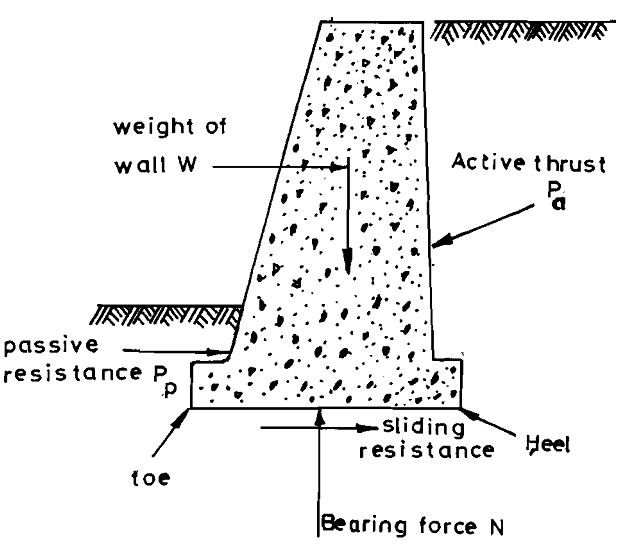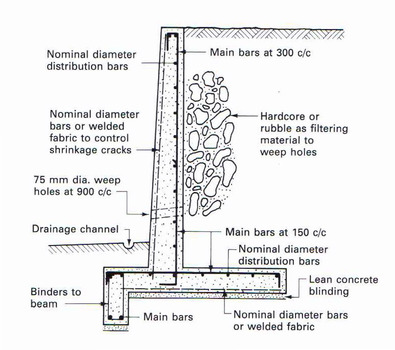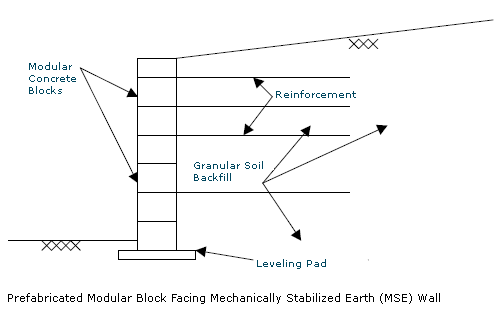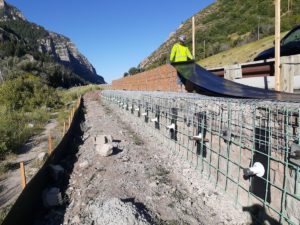Retaining walls are used to retain a mass of earth that when left loose, will not retain itself under natural conditions. They appear in conditions where excavation or embankment is restricted by property, new or existing structure, or economy. A typical retaining wall is constructed with concrete, stone block, or heavy timber. There are a number of different types of retaining walls, but we will stick to the most common forms seen in the field and around the front range of Colorado.
The first, and simplest form of a retaining wall is the Gravity Wall. A gravity wall retains earth entirely by its own weight. It generally contains no reinforcement. They can be built with generally anything with enough weight to resist the earth it is retaining such as concrete, stone, or block.
Another common type is the Cantilevered Retaining Wall. This type of wall consists of a wall attached to a footing. The footing is extended back into the retained earth using the soil’s weight to help hold it back, much like a bookend holding books from falling over on your desk. These walls are generally formed with concrete reinforcement. These walls can also have counterforts attached to them for larger than typical heights.
The last type of retaining wall we will discuss is the Segmental Retaining Wall. These, in the simplest terms, are dry-stacked, segmental units or concrete blocks constructed in a running bond configuration. These walls can be constructed like Gravity Walls, with no geosynthetic reinforcing, for smaller walls or larger wall with reinforcing using the weight and friction of the soil retained to hold it in place.












